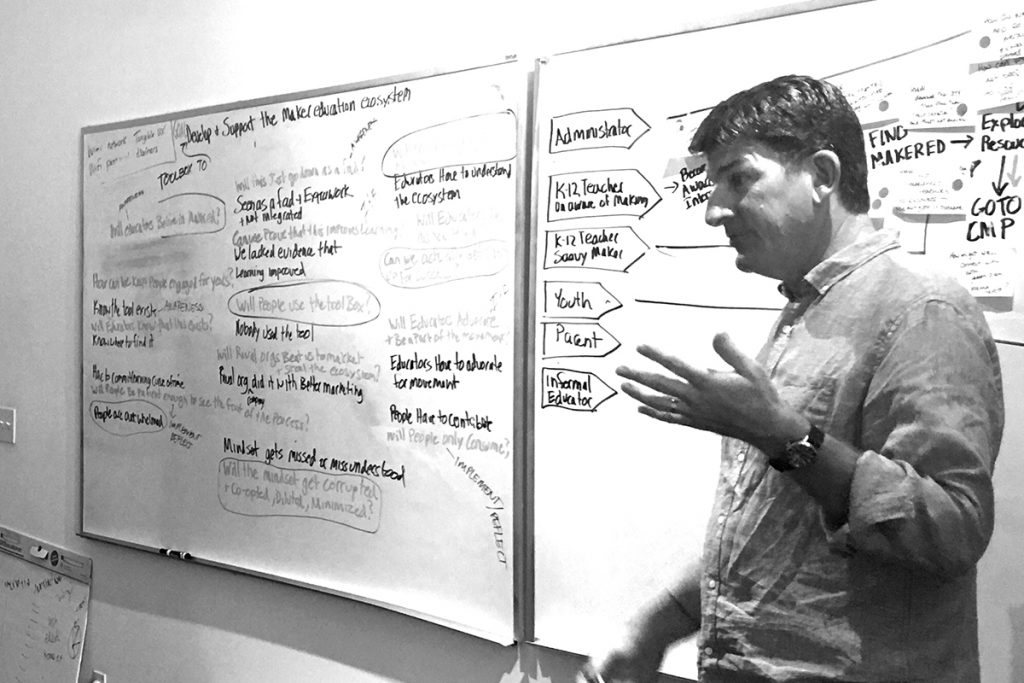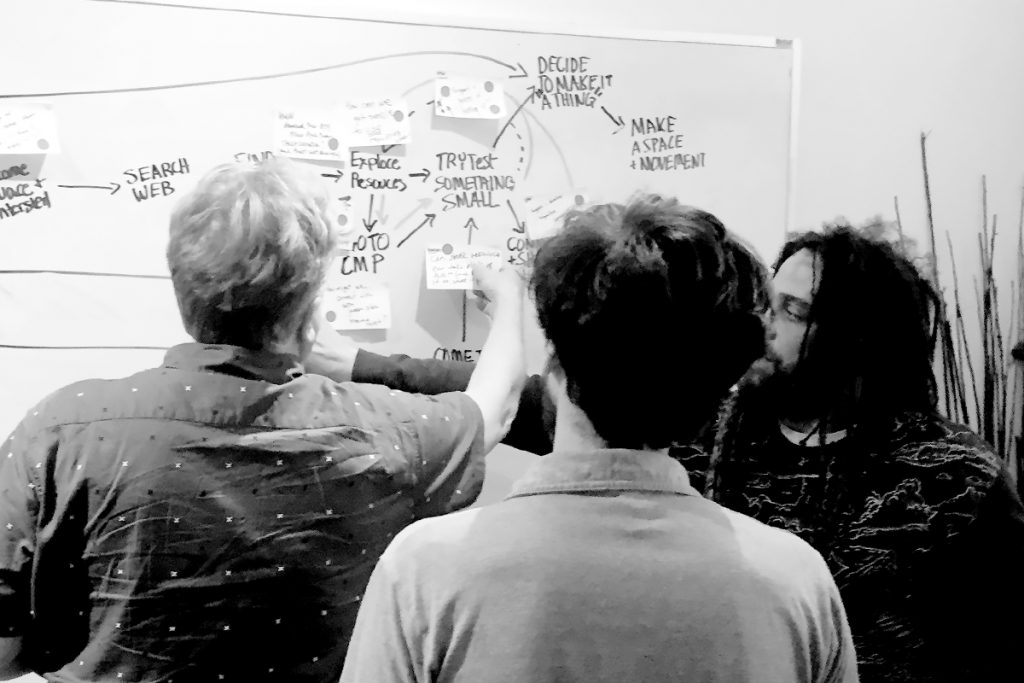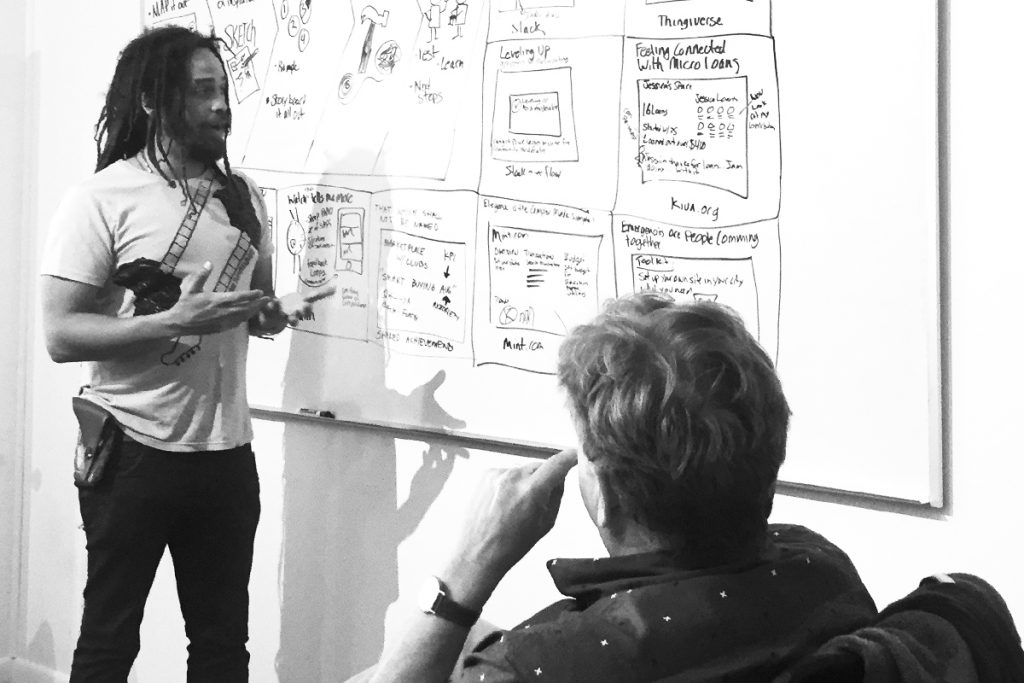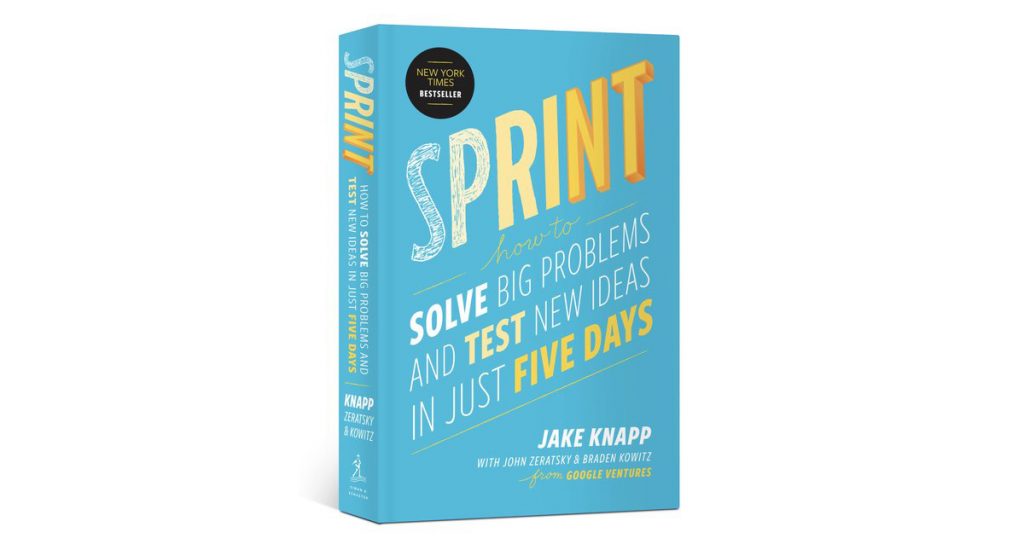I recently read a book I thought you’d be interested in. It’s called “Sprint: How to Solve Big Problems and Test New Ideas in Just Five Days” by Jake Knapp. The author does a good job of distilling the entire design thinking process into short, easy-to-understand pieces.
In this post, I’ll touch on the high-level ideas covered in the book … fill you in on how I’ve used these and similar concepts in my own work … and offer suggestions on how YOU can run your own innovation sprints!
Deciding how big is “big”
Knapp refers to “big problems,” which I think is a bit of a loaded term. For example, if you’re trying to solve childhood obesity, you might come up short if you use the innovation sprint process. A really big problem cries out for a longer and more in-depth design thinking process. However, if the big problem is more focused – say, getting kids to think broccoli is fun to eat – an innovation sprint might be just the ticket.
Defining terms
I feel you should call this the process an “innovation sprint” rather than, say, a “design sprint.” This is because an innovation sprint should be about developing and testing new, high-level ideas. Using a term like “design” can give the impression that the sprint is about fonts, colors, visuals, and so forth. And it gets it too confused with sprint planning for agile.
Breaking it down
Knapp does a fantastic job of taking you through the innovation sprint process step by step. It helps if you’re already familiar with the underlying theories of design thinking, but it’s not a requirement – anyone can follow the steps.
Too often, books on design thinking and innovation don’t provide enough detail to give people the confidence they need to work through the process. I’ve found that most people need to experience the design thinking process with a seasoned facilitator to fully understand it. (I know I did!)

Trusting the process
When I ran a recent innovation sprint, I pretty much followed the book word-for-word, just out of curiosity. Normally I would have been tempted to mix it up a bit, but Knapp laid it out so nicely, I decided to stick to the steps … and the session turned out great!
I like how the book puts a “twist” on familiar processes to improve results. For example, the “brainstorming alone together” idea eliminates the “groupthink” that’s often introduced by loudmouth extroverts like myself; it allows the introverts (who are too polite to ask me to shut up) to express their ideas fully.
Agreeing to disagree
There are a few points where I found the innovation sprint process lacking. For example, I didn’t like that it cuts out user research in the beginning of the process. It does include time for “interviewing the experts,” where people in the organization are asked to serve as a proxy or advocate for users; I believe there’s a great deal of benefit to speaking to actual users right up front. In fact, the next time I lead an innovation sprint, I’ll do the user research the week prior to the session, so I’ll have findings to bring to the team on the Monday the sprint begins.
Next, to help you facilitate an innovation sprint successfully, let’s look at the lessons I learned (the hard way, of course).

Acknowledge the inherent tension…
… but don’t get caught up in it. On Day One of an innovation sprint, you can expect a lot of processing of “the problem” and the “problem space” … this can create tension amongst the team members. When I encountered this, I often dealt with it like a child trying to make his parents stop fighting! I found myself interrupting and trying to get everyone on the same page using my loud voice. This, not surprisingly, tended to make the situation worse.
However, when I responded like a marriage therapist might – “Tom, what do you think about what Mary just said?” – it diffused the tension and helped keep the team on track. As a facilitator, you should just relax and remind yourself, “This is their issue, not mine.”
Know that your sponsor/decider is stressed out
At times, the person who brought you in to facilitate may (involuntarily or not) use facial expressions that indicate they feel precious time is being wasted (or at least that’s how I interpreted the worried expressions I saw). Make an effort to encourage him/her that you’re all going in the right direction; it can be hard to see that you’re making progress.

Fake it ‘til you make it
As facilitator, I tended to take the sponsor/decider’s stress upon myself. I thought I was being sly about it, but apparently my emotions show much too easily (after all these years, I’m not as cool a cucumber as I thought!). So my tip is just to smile a lot. It will help you – and the team you’re facilitating for – stay happy and on task.
Keep the end goal in mind
People will come to an innovation sprint with their own agenda, which of course will have a lot to do with their own corner of their work “universe.” Every time I asked a question, certain team members would ask back, “Wait, is this for the whole education universe or just the part that we’re working on?” Establishing a clear goal up front will help head off many of these questions, though you’ll likely have to remind them of the goal – AND what it encompasses – often. Be patient!
Hire a professional prototyper
When it came to designing prototypes to represent the team’s ideas, I “cheated” and brought in one of my very talented designers to help build prototypes quickly. This saved us all valuable time … and the final product pleased the client so much it was worth it.
Assure them they won’t get behind
Most clients will resist the idea of spending an entire week on an innovation sprint, when there’s so much else to be done. Be sure to “sell” them on the fact that they’ll have time to keep up with work. For example, tell them that the sessions won’t begin until 10 a.m., and that they’ll get breaks during the session to stem the endless email stream.
Know that five is enough
Knapp’s book echoed Jakob Nielsen’s work in that he found he learned all needed to know from speaking to five users … speaking to any more was just busy work. I’ve said throughout my career that eight to 10 users were necessary to get the level and depth of feedback required. However, in an innovation sprint we only talk to five because we have to cover them all in one day (time constraints can provide good excuses!).
I now feel better telling a client that we only need five users … it will save them time and money, and they can be just as confident in the findings.
Celebrate!
As a facilitator, I am a big fan of going to happy hour at the end of the day. Have the team join you if they don’t have to rush off to let the dog out or pick up the little ones. Even if you’re not able to rally the troops for dollar margaritas, be sure to:
- Recap the progress they’ve made.
- Really look at them before they leave and tell them, “Great job, team!”
- Celebrate the innovations you’ve come up with; it’s good to step back and say, “Yeah, we came up with some really good ideas.”
- Remind the team that the time they’re spending is yielding tangible, valuable results.
If I could do it all again…
Facilitating an innovation sprint using Jake Knapp’s book turned out to be a positive experience, and I’d do it again given the right problem to solve for a client. I’m currently incorporating many of Knapp’s ideas into the larger design thinking methodologies I teach in my Stanford continuing education course.

In any case, don’t just take my word for it … check out “Sprint: How to Solve Big Problems and Test New Ideas in Just Five Days” by Jake Knapp. I’d be interested to hear which of Knapp’s techniques work for you!
Let’s Discuss

